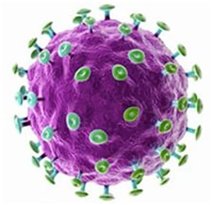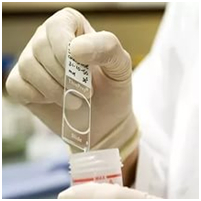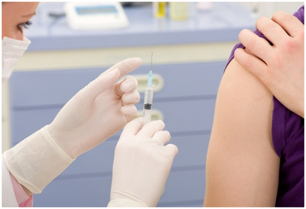
Human papillomavirus (HPV) is a serious cause of morbidity and mortality all over the world. Far the most common virus, and sexually transmitted infections. Infected with a threat-prone population of different age.
Every tenth person is the virus that has infected the world.
Some types of HPV that are associated with disease having a negative impact on reproductive function in women. Notes batch determination, new cases related to the female reproductive system oncology human papillomavirus infection.
Date.
The skin and mucous lesions known to humanity already more goals. In the name of "condyloma" in ancient Greek describes them doctors. Infection acquired a special relevance at the end of the twentieth century. At the beginning of the last century, it has been proven the viral nature of warts, of infection sexual transmission about the report, 1954
People kondilomatoz frequency between young and middle-aged:
- Between the years 1981-1986 5,4%
- Between the years of 1987-1999, 19.1%
- currently 60%.
What is human papillomavirus infection?
Human papillomavirus infection - a sexually transmitted chronic viral disease transmitted from person to person and.
Pathogen infection.
Pathogen Disease human papillomavirus (HPV) -general packet for more than 80 kinds of virus disease provoke various skin and mucous membranes of the body. Each HPV virus the group has their own sequence number.

Human papillomavirus detection:
- skin
- mucous membranes and oral cavity
- mucous membranes, conjunctiva
- mucous membranes, esophagus
- mucous membranes, bronchi, larynx
- the mucosa of the rectum
- mucous membranes, genital
Virus transmission.
Just varies from person to person virus transmission. The main transmission path - sexual.
Is also possible:
- communication-home transmission path if you have an infection, epithelial UN - secretly, it may be a virus, scratches and wear on the human body, virus, an infected person can remain bath, gym, swimming pool, towels, razors
- infected medical personnel inhalation of dust during removal, infected with genital warts laser surgical tool
- the transfer of the child from the mother during pregnancy
Contributing factors include the emergence or recurrence of HPV:
- Hypothermia
- Hormonal disorders
- Medical manipulation (abortion, intrauterine introduction)
- Pregnancy
Group HPV infections
- Cancer diseases, which resulted in not HPV (skin warts)
- Cancer low risk HPV (genital warts variety)
- high-risk HPV (Tumor Diseases in men and women)
Prevalence of HPV-associated diseases in the world
- 000 21 - Cancer of the vagina and vulva (in women)
- 40 000 - Anal cancer (among men)
- 60 000 - anal cancer (in women)
- 530 000 - cervical cancer (in women)
- 17 300 000 - genital warts (among men)
- 14 700 000 - genital warts (among women)
Human papillomavirus infection for 2 months before the incubation period can take 2 to 10 years, on average 3 months.
Hidden throughout characteristic of human papillomavirus infection.
Clinical picture.
Along infection different. He spontaneously disappears, and then can move again.
3 features of the form of the disease.
- the clinical situation is papillomas
- subclinical - no symptoms are visible, asymptomatic, only detected during this additional survey (a study of colposcopy or cells)
- secret - only for analysis and is determined by blood
Human papillomavirus infection the main symptoms of this emergence:
- warts;
- papillomas - growths attached to the skin which is soft, thanks to the pedicle;
- the uneven surface with the growth of genital warts (mostly visible around the anus and the genitals).
Need to pay attention to these symptoms primarily.
The results of infection with the human papillomavirus:
- Cervical cancer is in second place in the list, cause of Death, woman. The phenomenon of life in women decreases an average age of 26. Proven 70% of cases of cervical cancer-causing HPV types 16 and 18.
- Cervical cancer is a completely preventable disease, that if your early stage of cervical cancer stage.
- Cancer of vulva and vagina.
- Anal cancer. Registered approximately 100,000 annual cases of this type of cancer.
- Cancer of the penis. It is called the of cases in up to 35%, HPV 16 and 18, HPV 6 and 11-5% condition.
- Anogenital warts. Invoked HPV 6 and 11. According to WHO data, are recorded in the world every year, more than 30 million cases of sexually transmitted warts.
- The field of oropharyngeal cancer in young men.
The virus is in the body and type?

In most cases, the infection is asymptomatic, the patient is usually identified with the virus, therefore a special analysis.
HPV diagnosis may include:
- clinical examination of the patient;
- on examination the cervix;
- Polymerase chain reaction (PCR) - effective thanks to a diagnostic method to identify which type of virus;
- saytolojik working - air cells were examined under a microscope (Cytology pap uterine);
- blood count to determine HPV antibodies (such a method is used very rarely);
- during a biopsy, a diagnostic "place" (e.g., genital warts or HPV), to retrieve the particles to the fabric. Assigned, if it is suspected, the patient cancer disease.
What is a Pap test?
Precancerous or cancerous cells in the vagina and cervix that can be detected with this test. Smear the surface with a spatula or a special channel of the uterus is taken. The glass applied on the material received and sent to the laboratory, where doctors-laboratory technicians carefully studying cellular structure. A Greek scientist named Georgios Papanikolaou test.

A Pap test should be done when and to whom?
- Saytolojik a smear test needs to be done; every woman at least once a year, starting with the beginning of sexual activity or 18 years of age. In case of absence, to the analysis of permissible sexual relationship for the 1st time 3 years.
- It is recommended that a smear test be done twice a year saytolojik when you use hormonal birth control at the same time, women have genital herpes.
- Why more often cytological studies for female sexual partners change often, excess weight (obesity), infertility, the presence of genital warts, and genital organs.
Prevention human papillomavirus infection.
In considering a particular hazard, an infection, poor yield, current treatments, prevention the priority value of the gain, it is an infectious disease.
Specific prevention:
- sex education, teens
- limiting the number of sexual partners,
- the use of condoms reduces the risk of HPV infection
- cervical screening, with women representing the regular inspection the Pap test (cervical smear) for early diagnosis and treatment, pathology
- smoking cessation
Special Prevention:

The most dangerous vaccine (oncogenic) HPV types HPV in contact with boys and girls ages 12-13 years ago and potential sex life. Persistent immune that occur after vaccination.
Why is it so necessary vaccines human papilloma virus infection?
Why the rebirth of the human papillomavirus virus and malignant cells, i.e., which is a cause of cancer, especially cervical cancer.
In recent years the frequency of genital cancers in men is rising, due increasingly to put a question about introducing HPV vaccination the two sexes.
Currently, an effective vaccine against the HPV vaccine schedules in 57 countries, six of them introduced the vaccine for both sexes.
Rebel yield reaches 98-100%, proven in clinical trials.
Before the start of Sexual the most effective vaccine Gardasil, however, that are suggested to all the women of a young age.
Implementation of large-scale vaccine will prevent until 80-82% of all tumors of this group.
Prevention human papillomavirus infection cervical cancer is one of the most important components of warnings, certain types of cancer in men and in women.























